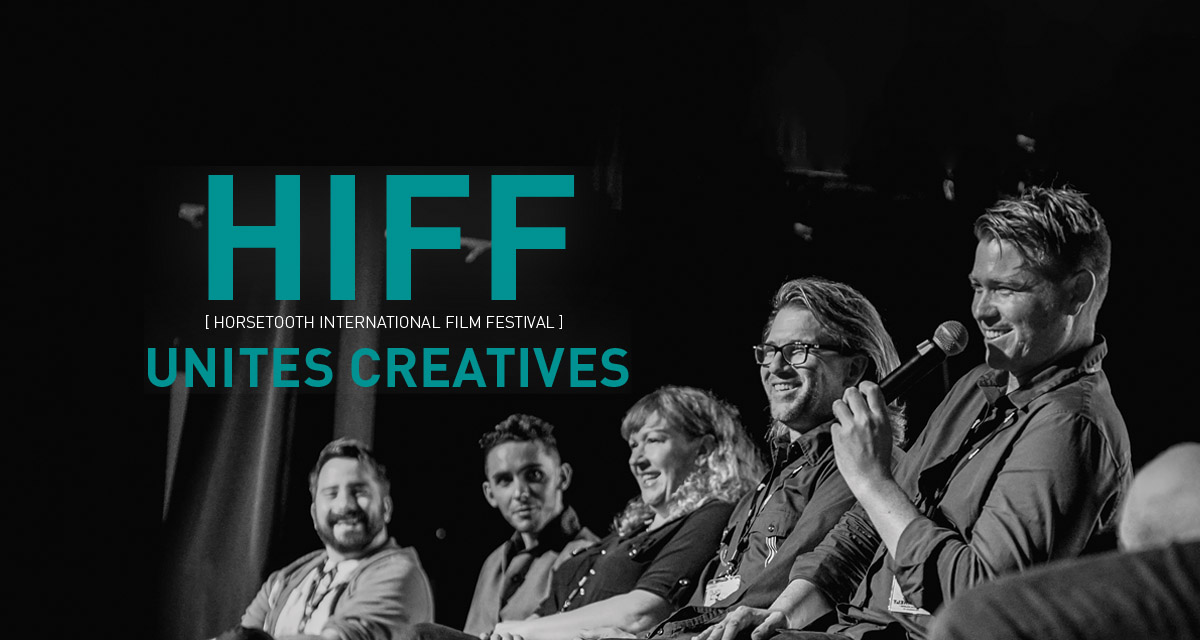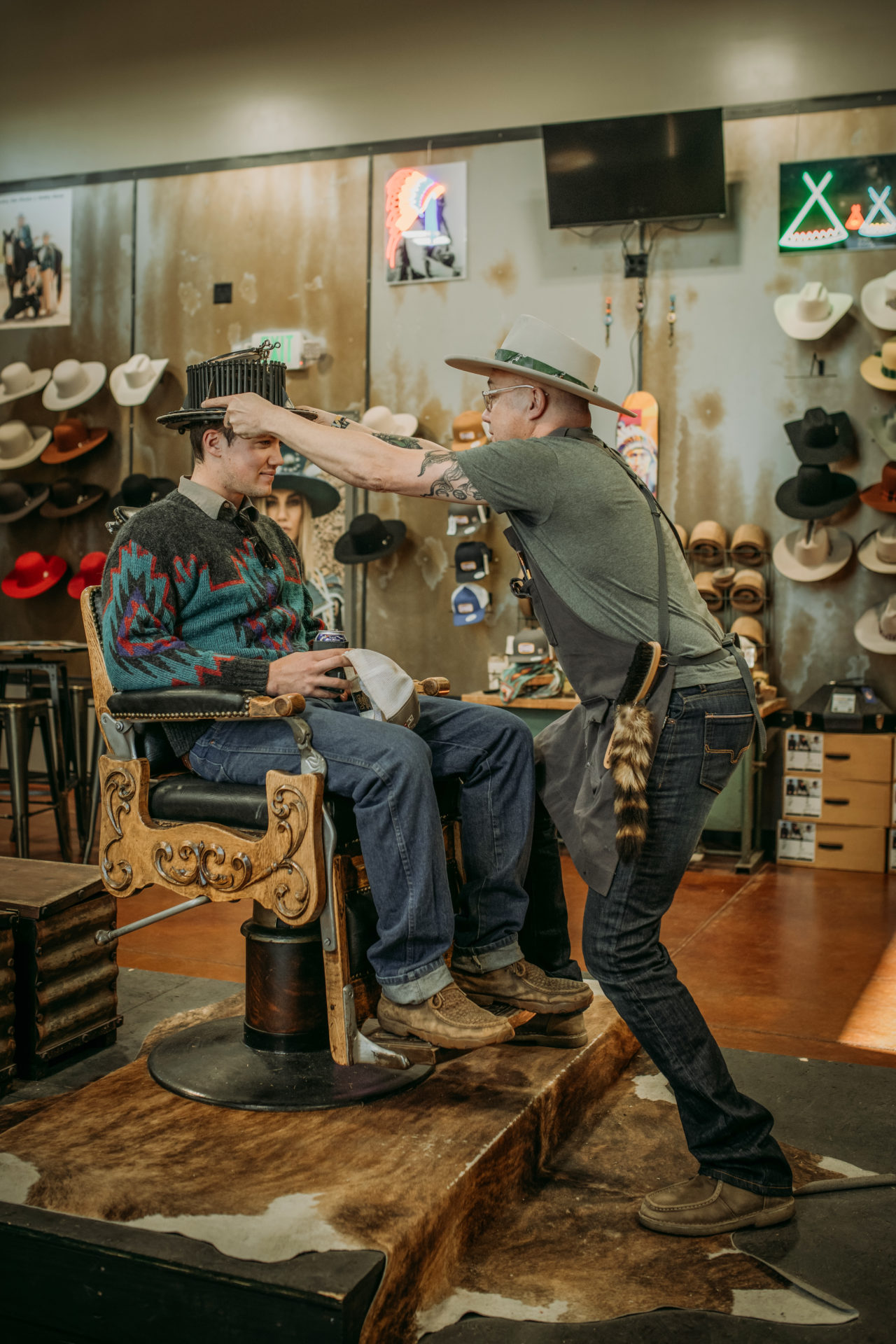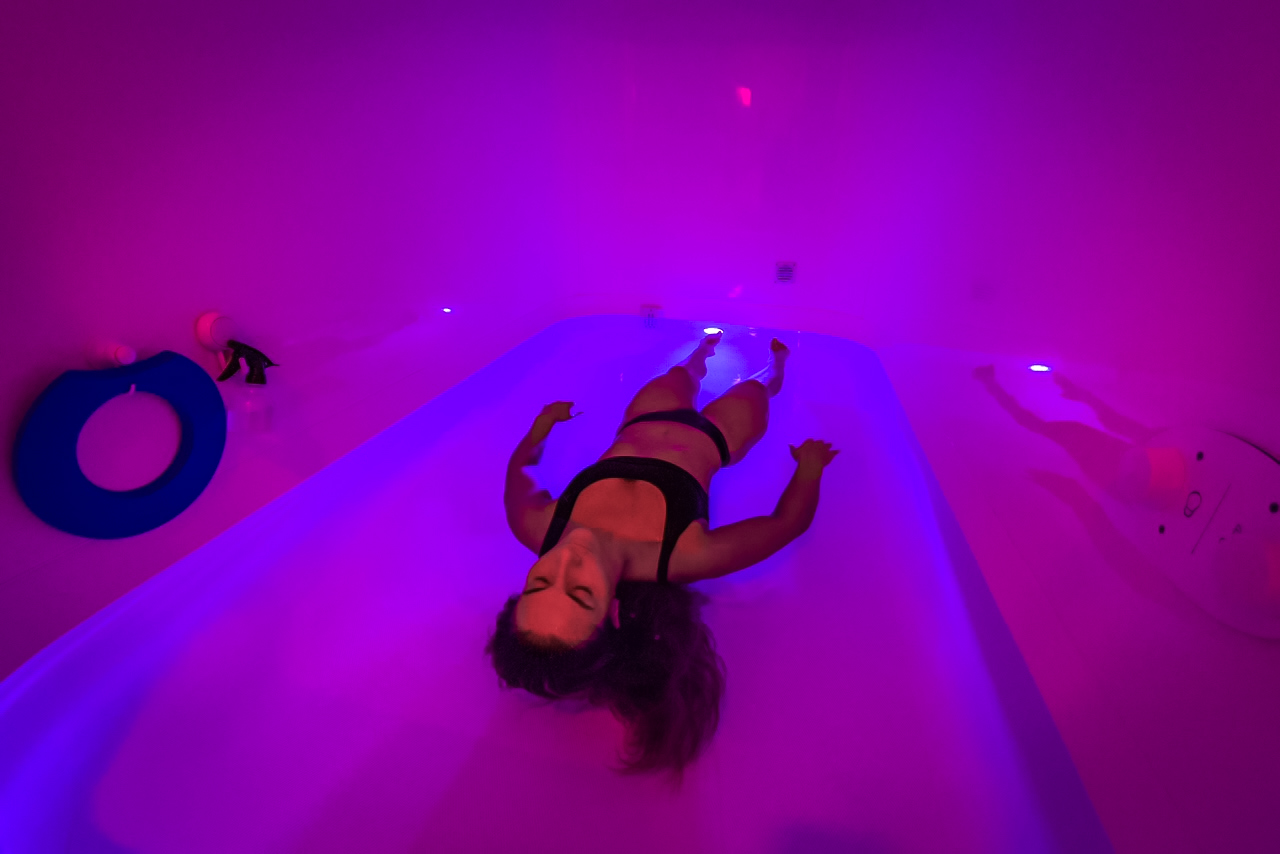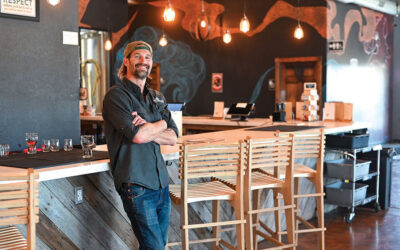John Hunt and Jesse Nyander are Northern Colorado filmmakers who met a lot of other creatives and then watched them leave. To keep those people in the area, they founded the Horsetooth International Film Festival four years ago.
“A big talent pool was developing, but when filmmakers reached a certain level of success, they had to leave to reach the next level,” Hunt says. “We thought, if we could help each other grow and use our experience to inject new opportunities and have a platform to collectively show our work and develop our craft, we could unite Northern Colorado around film.”
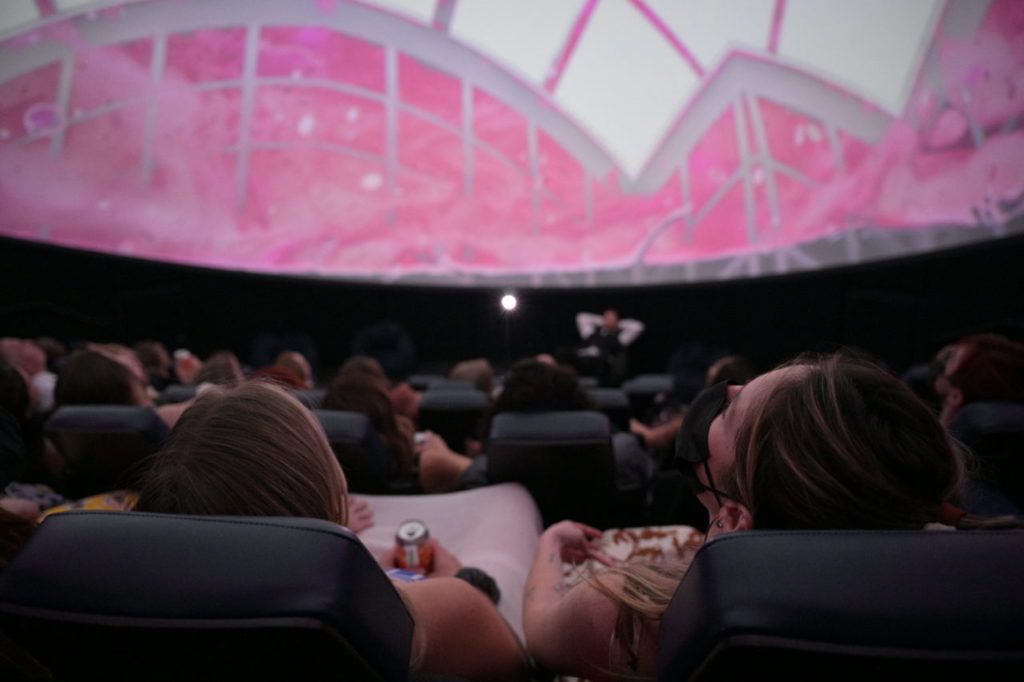
The Otterbox Digital Dome Theater at the Fort Collins Museum of Discovery offers festival audiences a venue to see 360-degree, Full Dome and VR Films. Photo courtesy of HIFF.
It helps that geographically, Colorado is one of the great places in the world for film to happen, Hunt says. With over 300 days of sunshine, there’s rarely a production issue, like getting rained out. The only thing Colorado is missing is an ocean, which he says is easily overcome in the studio.
Along with film, NOCO has a vibrant music culture—film and music go together like pancakes and syrup.
Given that there are over 200 film festivals in the state year-round, it’s no small feat to have a festival in its fourth year. Their method has been to build a four-day festival (Sept. 8-11) that’s much more than just screening films.
The festival’s four days unite creatives around four prongs—film, music, tech and culture—and invite participants to attend screenings, performances, experiences and workshops to network, educate themselves or just enjoy it.
Organizers anticipate 5,000+ attendance this year and, since the festival is also available virtually, a spike in digital impressions of nearly 300%, according to a news release.
To achieve this growth, Hunt says it’s been important to add foreign film and workshops to bring in out-of-town people to discuss current topics in film.
One panelist last year was Dewi Marquis, an indie film director and editor whose work aims to use the medium to address modern issues of race and privilege, Hunt says.
Another panel was a professional music house in Oregon offering guidance on how filmmakers can score their films to make them more relevant.
The idea of inclusivity plays out in how the festival defines a “creative.” It can mean a hair and makeup artist, Hunt says, oftentimes undervalued talents that can provide insight into a character and help a filmmaker tell the story.
Submission categories include narrative, next generation student, documentary, frame by frame animated short, VR (virtual reality), AR (augmented reality) and full-dome, and “I Want My MTV Back,” a nod to Colorado’s vibrant music video scene.
Because extreme sports and adventure film have enthusiastic followings in the area, both from a filmmaking and viewing standpoint, the outdoor and Colorado premiere narrative feature categories are festival favorites.
There’s also the experimental genre—Results May Vary—filmmaking, which explores beyond mainstream borders.
Hunt and Nyander also emphasize that even though the festival provides learning opportunities at every turn, it’s also a lot of fun. Last year, the festival paid more than 90 musicians to play, and expects at least that number this year, and artists will display and demonstrate their work as well.
“Listening to music, drinking and having a good time is the core of what we’re doing,” Hunt says.
The term “film” has wide interpretation. Hunt and Nyander say a large volume of film work is producing video for business marketing, a genre that continues to see expansive growth. Hunt’s local film company, Arcadian Pictures, has created a film for a Larimer County mental health campaign, Mental Health Matters, among other work.
“It’s not just movies. It’s storytelling for businesses that you don’t necessarily watch in a theater,” Hunt says.
Remote work for creatives since the pandemic has boomed, allowing more opportunities for growth. They’re seeing people move to NOCO from Austin, Los Angeles and New Mexico; some move here for the political environment, others for access to beautiful landscapes, hiking trails and the desire to see their families grow up in an outdoor area with great water, he says.
The festival returns to the Rialto in Loveland, a benefit of not being limited to outdoor events like they were during the pandemic.
They’re also bringing back the Museum of Discovery black tie gala on Friday, September 9. The rooftop event provides an opportunity to dress up and has historically been one of the most attended nights of the festival.
The museum is also notable for its dome theater—there are only 75 in the country and three in Colorado. The curved screen can project 360-degree films, music videos, 3D animation and art.
Sunday, September 11, the festival lands at The Lyric in Fort Collins, the event’s home base, and wraps up the next day.
Hunt and Nyander are excited to help other filmmakers show their work and are pleased that NOCO has so many independent theaters who are willing to provide a venue to do so.
“There’s nothing more thrilling for a filmmaker than to see your work on a big screen,” Hunt says. “It’s a really cool way for people to get started and feel motivated to take their craft to the next level. Getting collective critical feedback from peers is like a filmmaker’s open mic.”
For HIFF4 event dates and information, visit horsetoothfilmfestival.com.
___________________________________________
Emily Kemme is a Colorado freelance writer.


